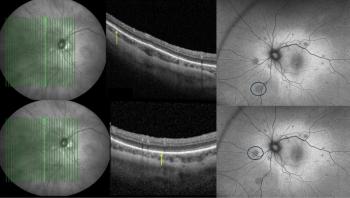
Photoablation increases refractive index of stroma
Photoablation increases the refractive index of the stroma following laser in situ keratomileusis (LASIK) surgery, according to a study published in the July 2008 issue of the Journal of Cataract and Refractive Surgery.
Photoablation increases the refractive index of the stroma following laser in situ keratomileusis (LASIK) surgery, according to a study published in the July 2008 issue of the Journal of Cataract and Refractive Surgery.
Sudi Patel, PhD of Practitioner Services, CSA, NHS Scotland, Edinburgh, UK and colleagues performed LASIK in 49 subjects (76 eyes) using either a microkeratome (M2; Moria) or a femtosecond laser (IntraLase; AMO). Patients undergoing surgery with a microkeratome (57 eyes) had a mean pre-surgical refractive index of 1.366±0.0049 SD; those treated with the femtosecond laser (19 eyes), 1.374±0.0047. After lifting the flap, the team measured the refractive index of the stroma before and immediately after photoablation.
Postoperatively, the mean refractive index of the microkeratome group was 1.382±0.0066; in the femtosecond group, it was 1.391±0.0102. Following ablation, both groups demonstrated a statistically significant increase in refractive index. A longer treatment time was associated with a greater increase in the refractive index.
Thus the researchers concluded that photoablation increases the refractive index of the stroma and that there exists a linear correlation between treatment time and the magnitude of refractive index improvement.
Newsletter
Get the essential updates shaping the future of pharma manufacturing and compliance—subscribe today to Pharmaceutical Technology and never miss a breakthrough.













































